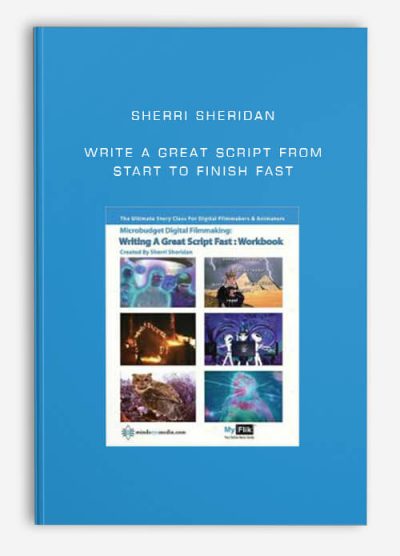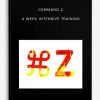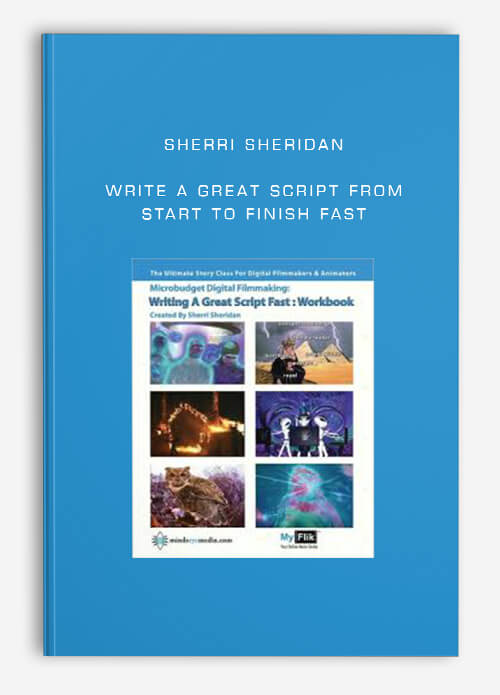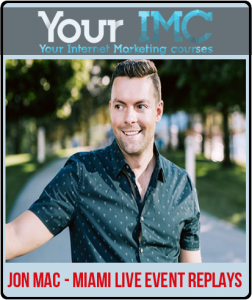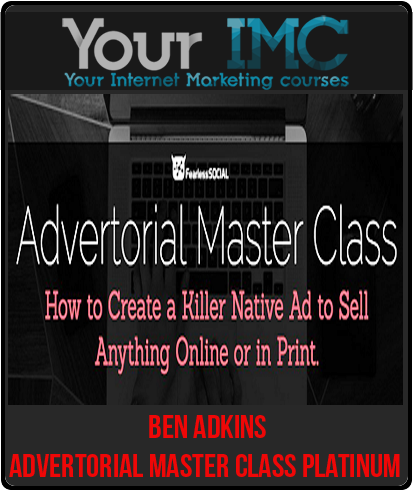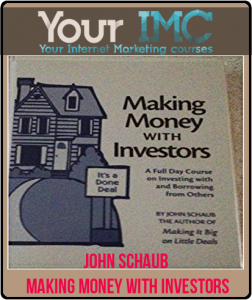Sherri Sheridan – Write A Great Script From Start to Finish Fast
$72.00
- Description
Description
Sherri Sheridan – Write A Great Script From Start to Finish Fast
**More information:
Get Sherri Sheridan – Write A Great Script From Start to Finish Fast at bestoftrader.com
Description
Do You Want To Learn To Write A Great script Fast? Story is the hardest thing to learn for most digital filmmakers these days since the technology has become so inexpensive and easy to use. How would you like to write a great script in about 24 hours while learning almost everything you need to know to tell brilliant visual stories for the rest of your life?
1: Introduction & Basic Story Structure: Learn what other subjects you need to be studying to become a great filmmaker or visual storyteller and why. The basics of three act structure stories are covered including plot, character and theme. Tips on story goals to keep in mind while planning your script. (69 min)
2: Brainstorming For Story Ideas: Follow along with a step-by-step process to come up with the perfect film or story ideas for you! This DVD can be used whenever you need to come up with lots of ideas fast. Great for organizing lots of creative ideas, or working on a story with a group.
3: Creating Original Characters: Take the final story idea you came up with and develop your characters. Learn over 28 character identification techniques to hook your audience emotionally during the first five minutes and see how Pixar does it in Finding Nemo.
4: Character History: Take the main characters in your story idea and turn them into believable, emotionally complex beings whom audiences will identify with and love to watch. Learn how to combine strong contrasting character trait sets for your entire cast to create emotional fireworks.
5: metaphors & Symbols: Learn how a picture is really worth a 1000 words using metaphors and symbols to create an original visual language for your film.
6: Symbolic Story Elements: Learn how to tell visual stories using images, sounds, actions, objects, settings, lighting, color and gestures. 100’s of metaphors and symbols are explored as you pick symbol sets to tell your own story.
7: Symbolic Story Themes: Learn how to weave a symbolic visual theme, hidden message or controlling idea into your film or story.
8: Drama & Hero Journey Plots: Learn how to construct strong plots with great story structure every time.
9: Other Types Of Plot: How can you mix and match other plot structures for your film or scenes?
10: Plot Twists, Goals & Endings: Learn 1000’s of ways to make your story feel like an emotional roller coaster ride and how to craft a thrilling climax ending.
11: Setups & Short Film Plot Points: Learn how to use multiple setups and payoffs to create stories that feel deeply layered. How to tell a great story in a short film, or scene, is covered in 9 basic plot points.
12: Feature Plot Points & Symbolic Settings: How easy would it be to write a feature script if you had a 40 plot point guide? The classic film Star Wars is broken down into 40 plot points then later used to show how the same type of structure applies to many other films such as Finding Nemo on DVD 13. Take each of your 40 plot points and attach a symbolic setting to help tell your story visually.
13: Treatments & Finding Nemo 40 Points: Learn how to take your 40 plot points and write a solid treatment for a script. Have you ever wanted to create a Pixar level story? Watch as Finding Nemo is deconstructed using the 40 plot points in a variety of different ways.
14: Adding Conflict: The amount of conflict in a film usually determines the level of audience interest in your story. Take your story idea and add layers upon layers of different forms of conflict and obstacles to each plot point. Scene shapes for controlling pacing and transitional scenes are also explored.
15: Scene Reversals: Do you know how to create scene reversals? Most writers have never heard of reversals. Learn how to create individual scenes that really pop with suspense, surprises, shocks and emotions using 100’s of scene reversal techniques.
16: Plot Weaving: How to construct well woven plots with great story structure is explored along with adding a layer of emotional subtext beneath each individual scene.
17: Real Dialogue & Monologues: How can you make your dialogue sound more real and be super powerful emotionally? 10 basic types of monologue approaches are also covered. Tips on how people talk will make your dialogue sound more real.
18: Suspense: Learn 100’s of techniques for adding layers upon layers of nail biting suspense to every scene in your story. Modern audiences like lots of suspense in each scene. Adding several of these suspense ideas to each scene in your film will make almost any story a rollercoaster ride audiences will love to watch!
19: Humor & Screenwriting: Learn 100’s of techniques for adding humor and funny moments to you film. Layer these funny ideas into each scene in your script. How to write a final script is also covered along with the 30 second short film plot structure.

